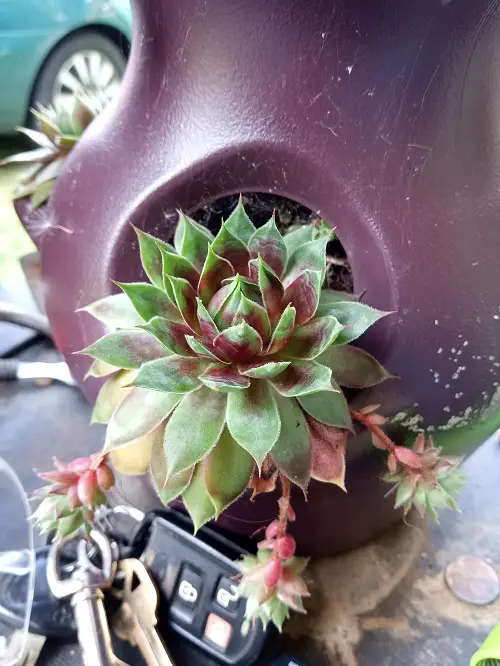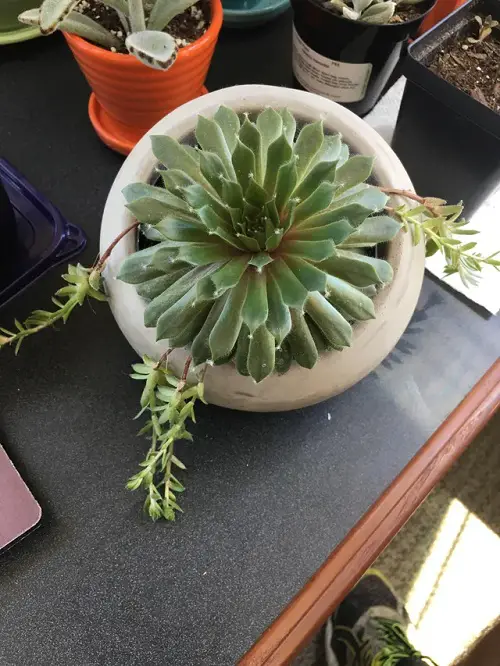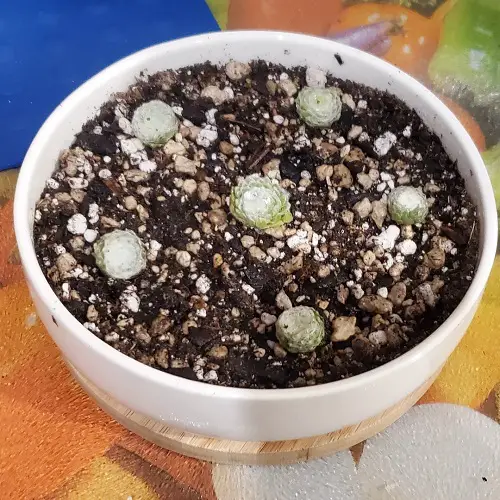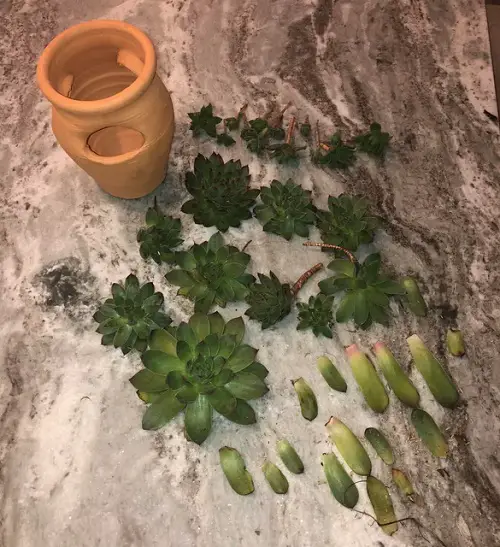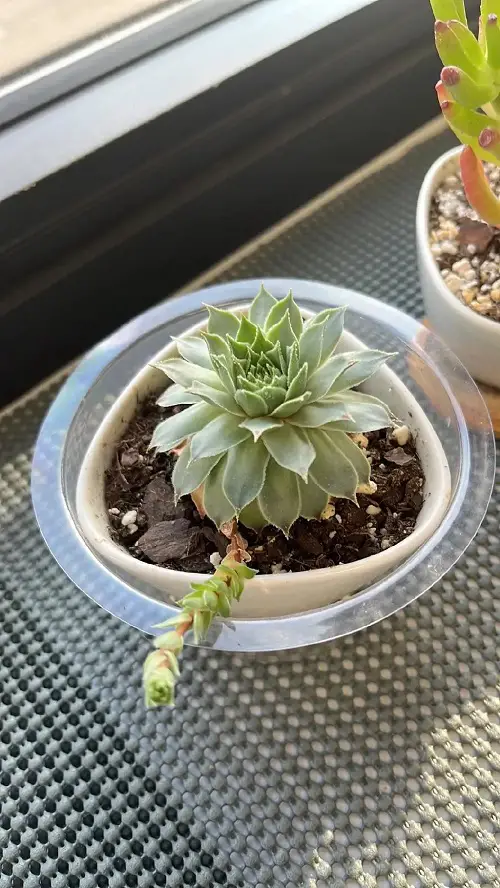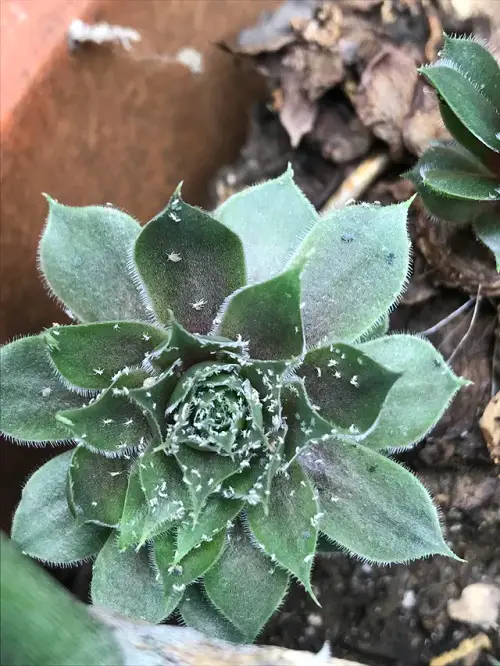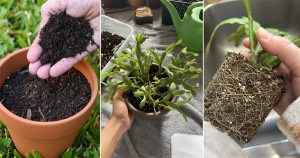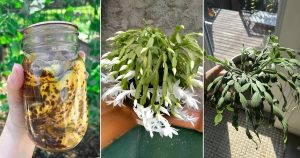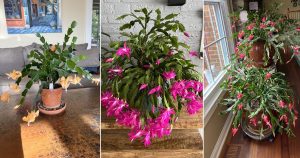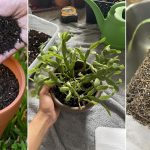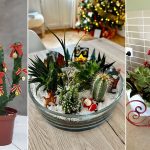Yes, You can Propagate Hens And Chicks Plant Using The Petals! Just learn the whole process in this easy and detailed guide.
Hens and Chicks are strong, drought-tolerant plants with a long life and plentiful production of offsets or pups. The beauty is enhanced when kept under adequate sun exposure. Learn how to grow and propagate them with this simple guide.
Hens and Chicks—Key Facts
| Common Name | Houseleeks or Hens and Chicks |
| Botanical Name | Sempervivum tectorum |
| Origin | Europe and Africa |
| Dimensions | (2-12) inches tall and (4-18) inches wide |
| Sunlight | Full sun exposure |
| Watering | Moderate to Low |
| Soil Type | Loose water draining soil |
| Propagation | Leaves, Pups or Offsets and Seeds |
| Fertilizer | Low fertilizer requirements |
| Blooming seasons | Summer |
| Flower color | Light Pink, Reddish-purple |
| Danger of Pests | Mealy bugs and Aphids in humid or moist regions |
| Diseases | Curling of leaves, Root rot, and Mushy leaves |
| Hardiness zones | 3-11 (USDA Zones) |
Plant Information
Houseleeks, scientifically as Sempervivum, are a group of succulents that belong to the Crassulaceae family with their unique rosette forms and hardy nature. The name Sempervivum is derived from a Latin word, meaning “always alive”. Native to mountainous regions of Europe, the Middle East, and North Africa.
Hens and Chicks can survive in extremely harsh conditions. These plants are popular for their rosette growth habit, where the “hen” (main rosette) produces offsets or “chicks” around its base. The growth pattern is mat-forming beautiful ground covers and best for rock garden landscape decors for outdoor gardens.
Hens and Chicks experience dormancy in both summer and winter. We have a complete guide on how to care for them during these periods, so feel free to check it out for detailed tips!
Hens and Chicks—Pot Size
Hens and chicks look good in pots and planters both outdoors and indoors. This plant does well in a shallow, well-drained container filled with a cactus/succulent potting mix. Use a clay pot, or sustainable ones as well that helps to absorb water if overwatered at times.
Hens and chicks can be grown alone as a small cluster colony or in a large container as one plant in a mixed group of succulents or a miniature rock garden. They look great in terrariums as well!
Propagation of Hens and Chicks
Hens and Chicks can spread up to 3 feet when they form colonies with their lateral rooting system. So, the best way to propagate these succulents is by their offsets or pups that rise from the sides of the base of the plant. However, there are other ways to propagate these succulents including leaves or petals, and seeds. let’s discuss them accordingly and also find out what is best for you!
Offsets
There will be lots of offsets in a mature Hens and Chicks succulent, provided with a good potting soil mixture. And to propagate these cute little pups you will need a small trowel. Carefully dig from the side of your selected offsets and transplant them into a well-drained loose potting soil. Lastly, make a shallow hole to promote lateral rooting.
Seeds
A mature Hens and Chicks succulent produces seeds after its blooming period. However, seeds from a hybrid plant may not germinate to produce plants. So, after the flowers bloom and fade away, look out for seeds from the pods left behind. Collect the seeds prepare a planter with suitable potting soil and moisten it by spraying water on it.
Sprinkle them on top of the soil and keep this pot in a bright location in your garden avoiding direct sunlight. Spray water whenever the soil dries out. The seeds will sprout within 3 weeks and you may add some gravel or mulch.
Can You Propagate Hens And Chicks Plant Using The Petals?
Propagating hens and chicks from leaves isn’t as easy as with other succulents, but you can still give it a try with some patience. Normally, they multiply better through offsets (chicks), but leaf propagation is possible if you follow the right steps. You’ll need a healthy Sempervivum plant, a sharp sterile cutter, cactus or succulent soil, a shallow container, and a spray bottle for watering.
Start by picking a healthy, plump leaf from the base of the plant. Be careful to twist and pull it off gently, making sure the entire base of the leaf comes off, as damaged leaves won’t root properly. After removing the leaf, leave it in a dry, shaded area for 2-3 days so the cut end can dry out and form a callus. This helps prevent rotting when you plant it.
Once the leaf is ready, fill your container with well-draining soil. Lay the leaf flat on top of the soil—don’t bury it or it might rot. Lightly mist the soil every few days, making sure it dries out between waterings.
After a few weeks, tiny roots should start forming, and if you’re lucky, you’ll eventually see small rosettes (chicks) growing. Once the rosettes are big enough, you can carefully transplant them into their pots.
Note: Leaf propagation with hens and chicks can be slow and tricky, so don’t worry if it takes a while or doesn’t work the first time.
Hens and Chicks Requirements
Sunlight
Hens and Chicks prefer full sun exposure and in certain conditions, at least 6 hours of direct sunlight is optimum for its healthy growth and development or plentiful production of offsets.
Additionally, it is sunlight that promotes its foliage coloration so if there is less sunlight then the colors might not flourish too much.
Soil
These succulents are not so choosy when it comes to soil types although they grow best in sandy soil with a mixture of gravels. And the second thing is that the soil must be well-draining or loose.
If the soil retains water or doesn’t have gravel, pumice stones, or sand in it then they won’t survive for too long.
Watering
Hens and Chicks have very less watering demands. Once they are well established in wherever you have planted them then you can control your hands on watering them. During the hot weather conditions, you may water them once or twice a week but still check the top layer of the soil before watering. If the soil is wet then don’t water.
Temperature
They can happily grow in various temperatures but 65 to 75 °F is best suited for them. If the temperatures drop too low, they will stop growing and enter into a semi-dormant state. Make sure you keep them in a bright spot in those days.
Humidity
Lastly, humidity is not something that bothers this succulent because they can grow and tolerate various humidity levels and are popular in dry climatic zones.
Hens and Chicks Care
Fertilizer
These hardy succulents don’t require much fertilizer. If growing them in pots, add fertilizer once a year, ideally during repotting. Organic fertilizers work best, as Hens and Chicks thrive in low-nitrogen environments. Be careful not to over-fertilize.
Pests and Diseases
Hens and Chicks may face pest issues like mealybugs and aphids, especially when grown indoors or in moist conditions. Treat infestations with rubbing alcohol or insecticidal soap.
Overwatering or poor drainage can lead to fungal infections or root rot. Keep them dry and in suitable soil to prevent this. Curling leaves indicate a lack of sunlight, so move your plant to a sunnier spot if needed.
Are you ready to plant some of these beauties in your garden? Let us know how you are going to plant them in the comments section!

